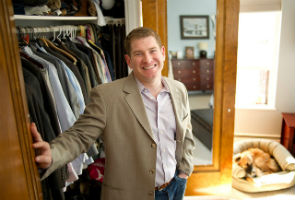- Home
- Internet
- Internet Features
- Knowing cost, the customer sets the price
Knowing cost, the customer sets the price
By Stephanie Clifford, New York Times | Updated: 5 June 2012 17:22 IST

Click Here to Add Gadgets360 As A Trusted Source

Advertisement
P. T. Vineburgh has a sense of how much things should cost, and on a recent trip to the Boston jeweler Shreve, Crump & Low, he was not afraid to say so.
"I know these things are significantly marked up," Mr. Vineburgh, 33, said about Chelsea clocks priced at several hundred dollars. "I said, 'I'm buying three; I'd like 15 or 20 percent off.'"
Sold.
Pricing has always been a tug of war between retailer and shopper, with the retailer having more muscle. No more. Thanks to the Internet and shopping comparison apps, price-wise shoppers are haggling. Mr. Vineburgh, a real estate agent, has a closet full of haggled items, including shirts from Jos. A. Bank and the Brooks Brothers outlet.
If retailers balk, some shoppers walk; there is always Amazon and eBay. The shifting balance of power has many stores scrambling for pricing strategies that get beyond the time-worn cycle of markups and discounts - and still make them money.
But can they outfox the newly empowered consumers?
J. C. Penney has introduced a streamlined system: daily prices, lower monthlong specials and clearance prices. Mango, the fashion retailer, has cut all prices by one-fifth. Stein Mart, the specialty chain, has reduced its coupons. Supervalu, the grocery chain, has sworn off heavy promotions and lowered some prices. Even Walmart has pledged to match competitors' prices if it sets its own too high.
"The customer knows the right price," said the chief executive of J. C. Penney, Ron Johnson. "We can raise the price all we want; she's only going to pay the right price. And why is that? Because she's an expert."
Penney's argues its proof is in the math. Over the last decade, higher prices did not make customers spend more, said Mr. Johnson, who took over the top job last year after running the retail operations at Apple.
An item that cost Penney's $10 in 2002 was typically marked up to $28. By 2011, a $10 item had been marked up to $40. But the price the customer actually paid for the $10 item increased only 5 cents during that period - to $15.95, from $15.90.
Until 40 percent off, "the customer doesn't even pay attention," Mr. Johnson said.
Ronald S. Friedman, the head of the retail group at Marcum L.L.P., an accounting firm that advises department stores and manufacturers, said the average markup for apparel at a department store began around 65 percent. Over 10 weeks, the stores will go to 25 or 30 percent off, then 50 percent off, 60 percent, and finally 70 percent or more, a discount so deep that the stores sometimes sell below cost.
"The shopper knows to wait for the sale," he said. "They know the prices are inflated when they first come out."
The new pricing at J. C. Penney is intended to break that mind-set, and the company is betting its turnaround on it.
The store has cut prices by about 40 percent versus before the change, and rounded prices to the nearest dollar ($12, say, versus $11.95 or $11.99). After that first tier of regular prices are specials, which last a month rather than a day or a few hours. And Tier 3 is clearance items, which go on sale the first and third Friday of every month, in tandem with many paycheck cycles.
J. C. Penney calls it "fair and square pricing," but some consumers seem to find it confusing.
"I really, really miss my coupons," Robyn Anderson-Beard wrote on the retailer's Facebook page. Bobbi Cada wrote: This "is not a change at all, there has never been a day in all of my shopping at JCP where ANYTHING has been full price."
And visiting a J. C. Penney in Florida this month, Michelle Clark, a Morgan Stanley analyst, took note of "sales associates that had difficulty explaining the new pricing strategy," along with a lack of shoppers.
Mr. Johnson said in late February that in the first three weeks, sales were trending below a year ago, but "it is way too early to jump to any conclusions on our new pricing strategy."
Rafi Mohammed, a pricing consultant, said Penney's merchandise was not unusual enough to draw customers into stores without significant markdowns. "A lot of people feel good about saving money and having a notion of, 'I saved X percent,' " he said. "Consumers do code a $19.99 very differently than a $20."
And history is not on Penney's side, as similar celebrated pricing experiments have failed. American Airlines tried a system similar to Penney's in 1992 -- and abandoned it after six months.
Pointing out that tickets were usually sold for far under face value thanks to promotions, American executives announced that the airline would eliminate 86 percent of the fares it offered. But competitors immediately began undercutting American's new straightforward prices.
Also, about six years ago, after Macy's took over a group of regional department stores, it decided that coupons were misleading. It slashed the number of coupons. Within a year, it reinstated the coupons; consumers, it turned out, loved them.
"I think it underestimates what a sport discount hunting is," Mark Ellwood, author of "Chasing the Sale," a coming book on discounting, said of coupon hunters. "They're like mathletes with credit cards."
Still, Penney's is not alone in trying to win over the price-smart shopper.
Stein Mart is simplifying its pricing, saying it will reduce coupons by 50 percent this year and get away from the falsely high price tags. "Our prices were built up to a point which was untenable, and the customer realized that," Jay Stein, Stein Mart's chairman and interim chief executive, said this month.
Urban Outfitters and American Eagle Outfitters are both reworking prices to get away from too-heavy promotions, while Mango has made the bold move of reducing prices by 20 percent beginning this spring. Supervalu recently cut prices on 200 produce items and says it will be reducing sales and "promoting everyday fair pricing," its chief executive, Craig R. Herkert, said.
In the end, it is shoppers like Mr. Vineburgh, the Boston haggler, who will determine if the new strategies work.
When something is priced right, he says, he does not try to haggle. Recently he paid the asking price for a composite hockey stick that was marked down to $70, from $150. "The right price, to me, is what I'm willing to pay for something," he said.
"I know these things are significantly marked up," Mr. Vineburgh, 33, said about Chelsea clocks priced at several hundred dollars. "I said, 'I'm buying three; I'd like 15 or 20 percent off.'"
Sold.
Pricing has always been a tug of war between retailer and shopper, with the retailer having more muscle. No more. Thanks to the Internet and shopping comparison apps, price-wise shoppers are haggling. Mr. Vineburgh, a real estate agent, has a closet full of haggled items, including shirts from Jos. A. Bank and the Brooks Brothers outlet.
If retailers balk, some shoppers walk; there is always Amazon and eBay. The shifting balance of power has many stores scrambling for pricing strategies that get beyond the time-worn cycle of markups and discounts - and still make them money.
But can they outfox the newly empowered consumers?
J. C. Penney has introduced a streamlined system: daily prices, lower monthlong specials and clearance prices. Mango, the fashion retailer, has cut all prices by one-fifth. Stein Mart, the specialty chain, has reduced its coupons. Supervalu, the grocery chain, has sworn off heavy promotions and lowered some prices. Even Walmart has pledged to match competitors' prices if it sets its own too high.
"The customer knows the right price," said the chief executive of J. C. Penney, Ron Johnson. "We can raise the price all we want; she's only going to pay the right price. And why is that? Because she's an expert."
Penney's argues its proof is in the math. Over the last decade, higher prices did not make customers spend more, said Mr. Johnson, who took over the top job last year after running the retail operations at Apple.
An item that cost Penney's $10 in 2002 was typically marked up to $28. By 2011, a $10 item had been marked up to $40. But the price the customer actually paid for the $10 item increased only 5 cents during that period - to $15.95, from $15.90.
Until 40 percent off, "the customer doesn't even pay attention," Mr. Johnson said.
Ronald S. Friedman, the head of the retail group at Marcum L.L.P., an accounting firm that advises department stores and manufacturers, said the average markup for apparel at a department store began around 65 percent. Over 10 weeks, the stores will go to 25 or 30 percent off, then 50 percent off, 60 percent, and finally 70 percent or more, a discount so deep that the stores sometimes sell below cost.
"The shopper knows to wait for the sale," he said. "They know the prices are inflated when they first come out."
The new pricing at J. C. Penney is intended to break that mind-set, and the company is betting its turnaround on it.
The store has cut prices by about 40 percent versus before the change, and rounded prices to the nearest dollar ($12, say, versus $11.95 or $11.99). After that first tier of regular prices are specials, which last a month rather than a day or a few hours. And Tier 3 is clearance items, which go on sale the first and third Friday of every month, in tandem with many paycheck cycles.
J. C. Penney calls it "fair and square pricing," but some consumers seem to find it confusing.
"I really, really miss my coupons," Robyn Anderson-Beard wrote on the retailer's Facebook page. Bobbi Cada wrote: This "is not a change at all, there has never been a day in all of my shopping at JCP where ANYTHING has been full price."
And visiting a J. C. Penney in Florida this month, Michelle Clark, a Morgan Stanley analyst, took note of "sales associates that had difficulty explaining the new pricing strategy," along with a lack of shoppers.
Mr. Johnson said in late February that in the first three weeks, sales were trending below a year ago, but "it is way too early to jump to any conclusions on our new pricing strategy."
Rafi Mohammed, a pricing consultant, said Penney's merchandise was not unusual enough to draw customers into stores without significant markdowns. "A lot of people feel good about saving money and having a notion of, 'I saved X percent,' " he said. "Consumers do code a $19.99 very differently than a $20."
And history is not on Penney's side, as similar celebrated pricing experiments have failed. American Airlines tried a system similar to Penney's in 1992 -- and abandoned it after six months.
Pointing out that tickets were usually sold for far under face value thanks to promotions, American executives announced that the airline would eliminate 86 percent of the fares it offered. But competitors immediately began undercutting American's new straightforward prices.
Also, about six years ago, after Macy's took over a group of regional department stores, it decided that coupons were misleading. It slashed the number of coupons. Within a year, it reinstated the coupons; consumers, it turned out, loved them.
"I think it underestimates what a sport discount hunting is," Mark Ellwood, author of "Chasing the Sale," a coming book on discounting, said of coupon hunters. "They're like mathletes with credit cards."
Still, Penney's is not alone in trying to win over the price-smart shopper.
Stein Mart is simplifying its pricing, saying it will reduce coupons by 50 percent this year and get away from the falsely high price tags. "Our prices were built up to a point which was untenable, and the customer realized that," Jay Stein, Stein Mart's chairman and interim chief executive, said this month.
Urban Outfitters and American Eagle Outfitters are both reworking prices to get away from too-heavy promotions, while Mango has made the bold move of reducing prices by 20 percent beginning this spring. Supervalu recently cut prices on 200 produce items and says it will be reducing sales and "promoting everyday fair pricing," its chief executive, Craig R. Herkert, said.
In the end, it is shoppers like Mr. Vineburgh, the Boston haggler, who will determine if the new strategies work.
When something is priced right, he says, he does not try to haggle. Recently he paid the asking price for a composite hockey stick that was marked down to $70, from $150. "The right price, to me, is what I'm willing to pay for something," he said.
Comments
Get your daily dose of tech news, reviews, and insights, in under 80 characters on Gadgets 360 Turbo. Connect with fellow tech lovers on our Forum. Follow us on X, Facebook, WhatsApp, Threads and Google News for instant updates. Catch all the action on our YouTube channel.
Further reading:
agencyfeatures, consumer, facebook, jc penny, online shopping, retailer, urban outfitters
Related Stories
Popular on Gadgets
- Samsung Galaxy Unpacked 2025
- ChatGPT
- Redmi Note 14 Pro+
- iPhone 16
- Apple Vision Pro
- Oneplus 12
- OnePlus Nord CE 3 Lite 5G
- iPhone 13
- Xiaomi 14 Pro
- Oppo Find N3
- Tecno Spark Go (2023)
- Realme V30
- Best Phones Under 25000
- Samsung Galaxy S24 Series
- Cryptocurrency
- iQoo 12
- Samsung Galaxy S24 Ultra
- Giottus
- Samsung Galaxy Z Flip 5
- Apple 'Scary Fast'
- Housefull 5
- GoPro Hero 12 Black Review
- Invincible Season 2
- JioGlass
- HD Ready TV
- Laptop Under 50000
- Smartwatch Under 10000
- Latest Mobile Phones
- Compare Phones
Latest Gadgets
- Huawei Nova 15
- Huawei Nova 15 Pro
- Huawei Nova 15 Ultra
- OnePlus 15R
- Realme Narzo 90x 5G
- Realme Narzo 90 5G
- Vivo S50 Pro Mini
- Vivo S50
- Asus ProArt P16
- MacBook Pro 14-inch (M5, 2025)
- Huawei MatePad 11.5 (2026)
- OnePlus Pad Go 2 (5G)
- Huawei Watch 10th Anniversary Edition
- OnePlus Watch Lite
- Acerpure Nitro Z Series 100-inch QLED TV
- Samsung 43 Inch LED Ultra HD (4K) Smart TV (UA43UE81AFULXL)
- Asus ROG Ally
- Nintendo Switch Lite
- Haier 1.6 Ton 5 Star Inverter Split AC (HSU19G-MZAID5BN-INV)
- Haier 1.6 Ton 5 Star Inverter Split AC (HSU19G-MZAIM5BN-INV)
© Copyright Red Pixels Ventures Limited 2025. All rights reserved.







![[Partner Content] OPPO Find X9 Two Week Experience: Here's Why It Stands Out](https://www.gadgets360.com/static/desktop/images/spacer.png)









